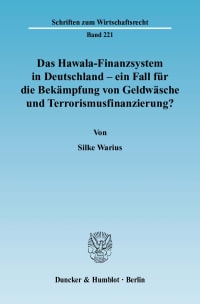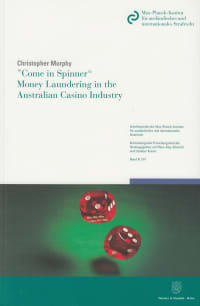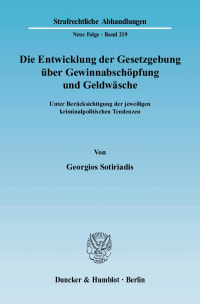Geldwäschegesetz und Kreditwesengesetz im Lichte von Rechtsdogmatik und Rechtsökonomie
Description
»The Risk-Based Approach to Money Laundering Prevention and its Consequences. Money Laundering Act and Banking Act in the Light of Legal Doctrine and Economic Analysis of Law«
This piece of work seeks to analyse as to whether the normative structure of the German Money Laundering Act and the Banking Act, now technically being flanked by a risk-based approach, possesses the potential to strengthen the effectiveness of money laundering prevention significantly. While conducting comprehensive research from a doctrinal perspective, the thesis does additionally discuss all major findings with particular regard to the methodology of the economic analysis of law. The author transfers the abstract legal discussion on rules vs. standards to the specific issue at hand. Furthermore, he critically reflects the legal risks and constitutional problems in terms of criminal investigations that involve, to some extent, private institutions as well.
Overview
Teil 1: Einführung in die Thematik und Problemaufriss
Einleitung — Hypothese und Erkenntnisziel — Gang der Untersuchung und wissenschaftliche Methoden — Begriffsbestimmung der Geldwäsche — Funktionsweise der Geldwäsche und verpflichtete Institute
Teil 2: Dogmatische und ökonomische Einordnung des Paradigmenwechsels
Ausgangspunkt: Regelbasierte Geldwäschebekämpfung vor dem Paradigmenwechsel — Paradigmenwechsel zum risikoorientierten Ansatz — Abhandlung des risikoorientierten Ansatzes aus der Perspektive der Rechtsökonomie
Teil 3: Rechtsdogmatische und rechtsökonomische Untersuchung der konkreten normativen Auswirkungen und Problemfelder
Die allgemeinen Sorgfaltspflichten — Vereinfachte Sorgfaltspflichten — Verstärkte Sorgfaltspflichten
Teil 4: Schlussteil
Zusammenfassung der wesentlichen Untersuchungsergebnisse — Der risikoorientierte Ansatz im Lichte der 4. und 5. EU-Geldwäscherichtlinie — Resümee: Über das Risiko regelbasierter Elemente und die Regelbasiertheit risikoorientierter Geldwäscheprävention — Wenn mehr weniger ist. Versuch der Formulierung von Verbesserungsansätzen
Literatur- und Stichwortverzeichnis









